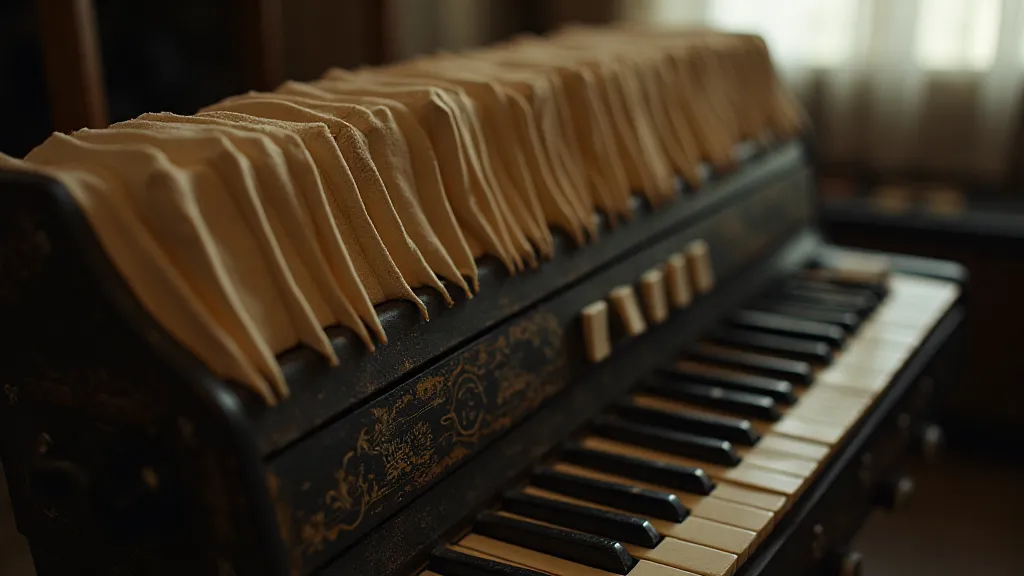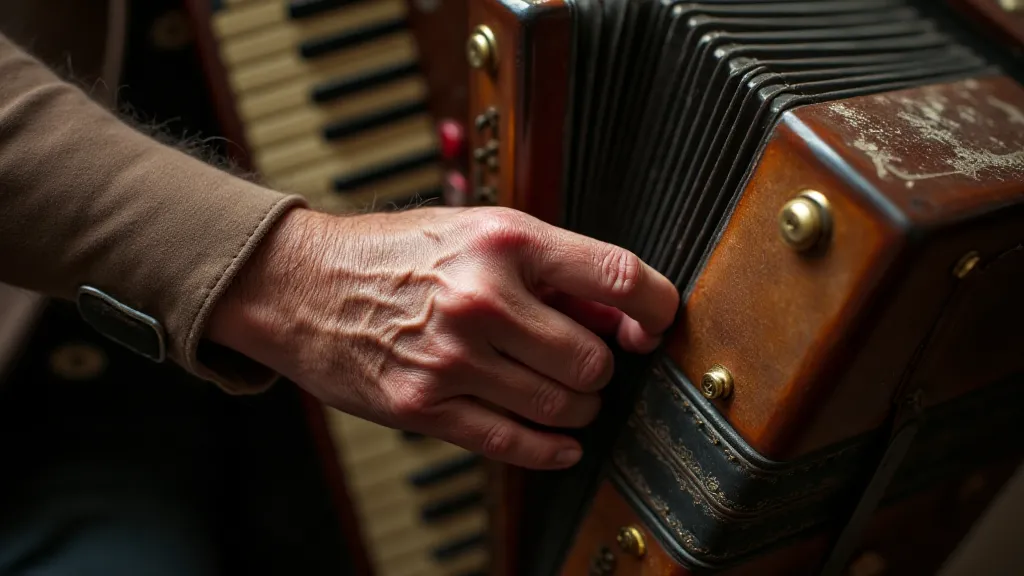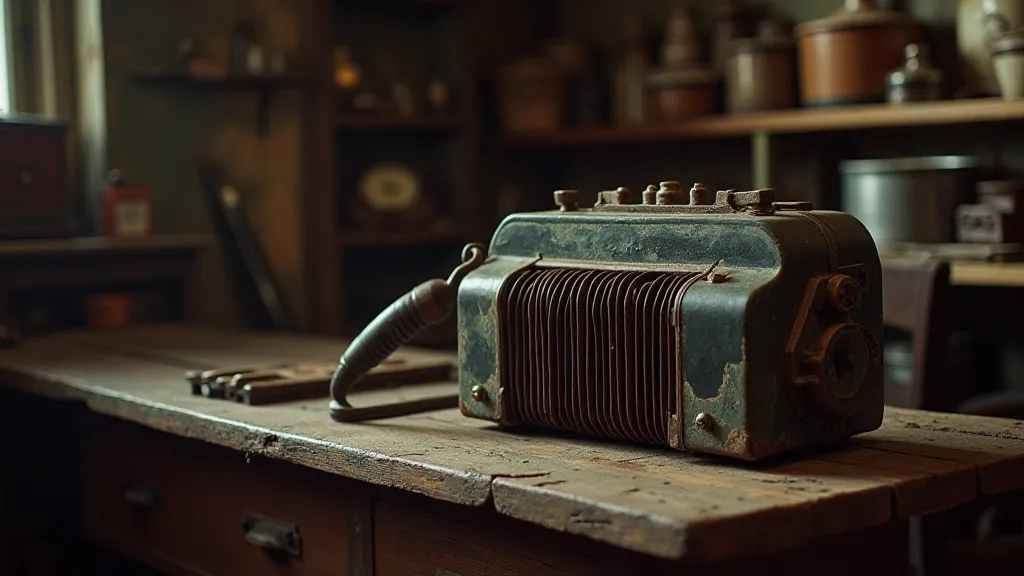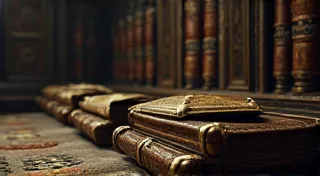Chromatic Silence: The Power of Unspoken Words in Narrative
There’s a particular scent associated with old things – a blend of dust, aged wood, and the lingering ghost of previous lives. It clings to antique accordions especially, a fragrance that speaks of hushed ballrooms, travelling musicians, and countless untold stories. I remember the first time I encountered that scent. My grandfather, a man of few words himself, had recently inherited a collection of instruments, a legacy from a distant relative I’d never known. Among them, nestled amongst tarnished trumpets and weathered violins, sat a Hohner Tango, its bellows stiff and its keys stubbornly silent.
He didn't offer a history, didn't attempt a demonstration. He simply pointed, his eyes holding a familiar, melancholic distance. "Listen," he’s said, finally breaking the silence. But he wasn’t instructing me to hear music. He wanted me to hear the absence of it. To listen to the stillness radiating from the instrument, the unsaid weight of its past.
The Art of What Isn’t Said
As writers, we’re often encouraged to fill the page. To explain, to elaborate, to ensure clarity above all else. But true narrative power often resides not in what we say, but in what we *leave* unsaid. The chromatic silence, if you will - that resonant space between words, actions, and gestures, brimming with unspoken meaning. It's the subtle shift in a character's posture, the averted gaze, the carefully chosen (or deliberately avoided) phrase, that can reveal more than any direct exposition ever could. This ability to hint, to suggest, and to leave space for the reader's imagination is what separates a surface-level story from something truly immersive and emotionally resonant. Think of the untold stories held within objects, objects that could almost speak, revealing past lives and concealed emotions if only they could articulate them. It’s a concept that resonates deeply with anyone fascinated by the weight of history and the art of uncovering hidden truths.

Historical Echoes and the Language of Gesture
Consider the accordion’s own history. Born in the mid-19th century, it quickly became the soundtrack to the working class—traveling peddlers, vaudeville performers, and immigrant musicians seeking connection in unfamiliar lands. It was an instrument of both joy and hardship, of celebration and longing. Its sound, often played in cramped spaces and smoky saloons, carried a weight of experience, a language unspoken by the bustling crowds. These were people whose lives were often defined by circumstance, by the need to persevere, by the power of connection through music—a connection often facilitated by an instrument that itself couldn't speak, yet communicated volumes.
Imagine a character – a weary traveler on a dusty road, his accordion his only companion. He doesn’t recount his journey, doesn’t describe the hardships he’s endured. Instead, he plays a simple, mournful tune, his fingers tracing familiar patterns on the keys. The melody itself speaks volumes – of loss, of resilience, of the unwavering hope that keeps him moving forward. The listener doesn’t need to be told; they *feel* it. This feeling, this unspoken understanding, is a testament to the power of suggestion, the ability to evoke emotion without explicit explanation. It’s a principle that’s essential for any writer aiming to create a truly immersive experience for their reader, much like understanding the untold stories locked within an old letter—the echoes of a life lived, a connection forged, a memory preserved. Sometimes, the most compelling narratives aren't about what's directly stated, but about what’s deliberately left unsaid, the subtle nuances of character and circumstance that speak volumes to the perceptive observer.
This isn’t merely about withholding information. It's about allowing the reader to actively participate in the storytelling process. It’s an invitation to infer, to interpret, to fill in the gaps with their own experiences and emotions. It's about understanding that sometimes, the most profound truths are found not in what is explicitly stated, but in the spaces between the notes. The act of discovering these truths is an intensely personal and rewarding experience, and it's something that writers should strive to cultivate in their readers. It’s about appreciating that often, a fleeting glance, a subtle gesture, can convey more than paragraphs of exposition ever could. The untold stories reside in these moments, in the spaces between words, waiting to be uncovered by those willing to listen carefully.
Crafting the Chromatic Silence: Techniques for Writers
So how can we, as writers, cultivate this art of unspoken meaning? Here are a few practical approaches:
- Utilize Body Language: A character’s posture, facial expressions, and gestures can convey a wealth of information without a single word. A clenched fist, a downcast gaze, a slight tremor in the hand – these subtle cues can reveal underlying tension, fear, or regret. Consider, too, the unspoken dialogue between characters, the subtle shifts in their posture, the way they avoid eye contact – these nonverbal cues can speak volumes about their true feelings and intentions.
- Embrace Subtext: Layer meaning beneath the surface of dialogue. What isn’t being said can be just as important as what is. Consider the context, the relationship between the characters, and their individual motivations. This is where the real artistry lies – in the ability to suggest, to hint, to allow the reader to draw their own conclusions. The truly skilled writer is a master of implication, a weaver of unspoken narratives that resonate long after the story has ended.
- Control Pacing: Strategic pauses and silences can heighten tension and create a sense of anticipation. A well-placed ellipsis (…) can leave the reader hanging, prompting them to ponder the unspoken implications. These moments of quietude are just as important as the action itself, providing a space for reflection and emotional resonance.
- Show, Don’t Tell (with Intention): This familiar adage is crucial, but remember to selectively *omit*. Don't simply show a character feeling sad; show the slight slump of their shoulders, the way they avoid eye contact, the tremor in their voice when they speak. This is about finding the most evocative and suggestive details, the ones that will speak directly to the reader’s imagination. It's about curating an experience, rather than simply providing information.
- Use Sensory Details Sparingly: Overwhelming the reader with sensory details can distract from the underlying emotions. Choose a few key details that resonate with the unspoken narrative. Like a carefully chosen note in a melody, each detail should contribute to the overall emotional impact of the story.
Understanding how to harness the power of what isn't said is akin to the work of an archivist, carefully preserving fragments of the past, allowing them to speak for themselves. Exploring the delicate art of uncovering hidden meanings often feels like the delicate task of deciphering an old letter, piecing together a narrative from incomplete fragments, allowing the unspoken to fill the gaps and reveal the heart of the story. If you're fascinated by that process, you might also appreciate how writers can explore the emotional landscape of their characters through subtle gestures and unspoken cues, as discussed in The Gardener of Unsent Letters: Cultivating Empathy Through Character.

The Restoration of Meaning: A Metaphor for Writing
There’s a parallel between restoring an antique accordion and crafting a narrative rich in chromatic silence. With an accordion, the challenge lies not in simply making it play again. It’s about understanding its history, preserving its integrity, and appreciating its unique character. Sometimes, the greatest act of restoration involves leaving certain imperfections untouched, acknowledging the marks of time and the stories they hold. These imperfections aren’t flaws; they’re evidence of a life lived, a testament to the instrument’s journey through time. They’ve witnessed joys and sorrows, celebrations and hardships, and they carry the echoes of countless melodies.
Similarly, in writing, we can’t always force a story to conform to our preconceived notions. Sometimes, the most powerful moments emerge from the unexpected gaps, the unarticulated desires, the unspoken fears that lie beneath the surface. Embracing these silences, understanding their significance, and allowing them to resonate within the narrative—that’s where the true artistry lies. It’s about recognizing that the most compelling stories aren’t always the ones that explain everything; they’re the ones that invite the reader to participate in the process of discovery. Consider the power of lost stories—those narratives left untold, waiting to be unearthed—as explored in The Cartographer of Lost Stories: Navigating Narrative Desertion.
My grandfather, a man of few words, didn’t teach me to play the accordion. He taught me to listen. To hear the music not just in the notes that are played, but in the spaces in between. To appreciate the power of what is left unsaid. And that, I'm realizing, is a lesson that applies not just to music, but to life, and most certainly, to the art of storytelling. Learning to listen deeply—to truly hear what isn't being said—is a skill that enriches every aspect of our lives, opening us up to a world of unspoken truths and hidden meanings. It’s a journey of discovery, a constant exploration of the nuances of human experience, and it’s a journey that’s well worth taking.

If you find yourself captivated by the exploration of hidden depths and unspoken narratives, you may also be interested in uncovering inspiration from the echoes of the past, which often reside in neglected spaces and forgotten objects, as explored in The Archivist's Chamber: Finding Inspiration in the Past. Finding your authentic voice as a storyteller often relies on honing your ability to convey meaning without explicitly stating it—a skill that allows your narratives to resonate with a profound and lasting impact.





